Do you know of an unusual means of transportation
in addition to trains, buses, and cabs ?
Here is what I would like to introduce to you this time.
Tosen (ferry).
Also called “watashi-bune”.
If you have read the previously posted article,
【I’ll tell you how to get from USJ to Tempozan for free! 】,
【 [Total length only 5km] Let’s explore the traditional area on a local train line in Osaka City 】,
in this article,
while touring a total of 8 ferry boats in Osaka City,
I will share with you Osaka’s lesser-known attractions.
This is a tour of eight ferry stops in just one day, almost entirely on foot from the starting point to the end of the tour.
Therefore, this article is intended for the following people
・Those who wish to tour the hidden sights of Osaka
・Those who like to walk.
If you meet these criteria,
I am confident that you will enjoy it.
Now I invite you to join me on a walking tour of the ferry.
Please enjoy it to the end.
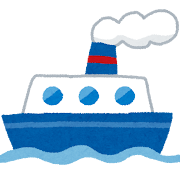
Overview of ferry boats in Osaka City
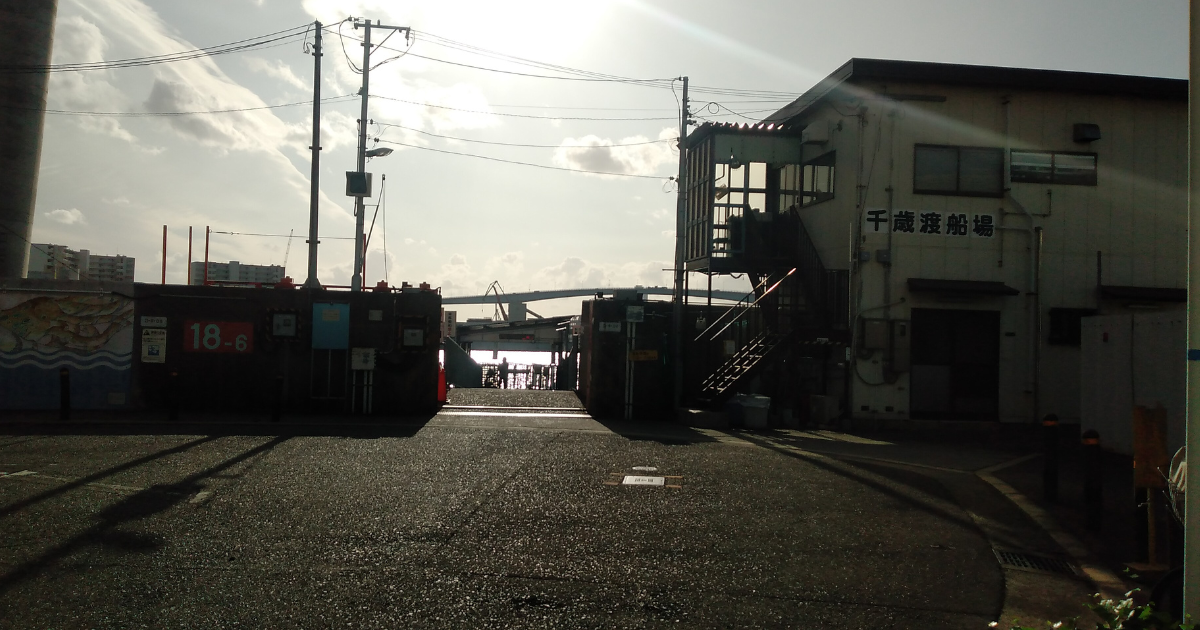
If you have read the previously posted article,
【I’ll tell you how to get from USJ to Tempozan for free! 】,
which I posted previously.
Some of you are reading my article for the first time,
Once again, I would like to explain about ferry boats in Osaka.
*If you know the overview of the ferry boats, feel free to skip it.
Currently, there are a total of eight ferry ports in Osaka City.
Seven of the eight locations are located in Taisho Ward Osaka City,
my hometown.
The service starts from the Taisho Ward side* and runs to the surrounding Minato, Nishinari, Suminoe, and Taisho wards.
It is used by many local residents for commuting to work and school, shopping, and leisure time.
*The “starting point” here refers to the location where the crew stations are located.
All are operated by the City of Osaka and are free of charge.
Why is boarding free?
By the old Highway Act of 1920 (Taisho 9),
the ferry boat is considered a road.
In other words, the ferry routes are treated just like the public roads that you travel every day.
So it’s free.
There are two main reasons why ferry boats still exist today.
One reason is that there are no bridges for people to cross where the ferry runs.
Another reason is that the bridges are unusually large and high,
making it difficult for people to cross them.

This is the “Namihaya Bridge”.
It is a large bridge connecting the southern part of Taisho Ward and Tempozan in Minato Ward.
There are no ferryboats running near this bridge, though,
A large, high bridge like this one is built near some of the ferry ports.
*If you are interested in the Namihaya Bridge,
please refer to this article previously posted .
To facilitate the traffic of large vessels,
near the mouth of rivers, high bridges is built.
Therefore, just going up and down the bridge alone is a big challenge.
Especially for the elderly, people with disabilities, and parents with small children,
crossing these bridges is a painstaking process.
Taisho Ward is also said to be an area with poor transportation access.
The railroad only goes through a small part of the northern part of the ward.
In most of the ward, local buses support the transportation of ward residents.
However, the ferry boats are also useful when local people want to go to places that are difficult to reach by train or bus.
Moreover, bicycle users can also board the boat.
It is no exaggeration to say that it is an essential means of transportation for the locals.
I hope that you have gained an overview of the ferry.
Let’s take a look at the itinerary of this ferry tour.

Itinerary of this ferry tour
This ferry tour will proceed as follows.
We start the tour at the Taishoubashi stop of the Osaka City Bus,
located near Taisho Station on the JR Osaka Loop Line and Osaka Metro Nagahori Tsurumi-ryokuchi Line.
Take bus No. 1 to the “Shin-Chitose” stop.
From the “Shin-Chitose” stop, walk to each ferry stop.
*Date of tour, July 19.
Chitose Ferry Port
↓
Funamachi Ferry Port
↓
Kizugawa Ferry Port
↓
Senbonmatsu Ferry Port
↓
Ochiaishimo Ferry Port
↓
Ochiaikami Ferry Port
↓
Jinbei Ferry Port
↓
Tempozan Ferry Port
After arriving at the other side of the river by the Tenpozan ferry,
walk to Sakurajima Station on the JR Yumesaki Line.
Please note that with the exception of some sections, the tour will be conducted only by ferry and on foot
from the Shin-Chitose stop on the OsakaCity bus to Sakurajima Station on the JR Yumesaki Line,
Now, let’s actually visit each ferry station.

Chitose Ferry Port
Now, let’s depart.

Go out the ticket gate of JR Taisho Station and turn left.
You will see Exit 2 of Osaka Metro Taisho Station.
Right behind it: ・・・・

Taishobashi No. 1 stop on the OsakaCity bus.

Take bus No. 87 or 98 to the “Shin-Chitose stop”.

This is the Shin-Chitose stop on the OsakaCity bus.
Keep going straight toward the large bridge you see in the back.


This is Marin Tennis Park Kitamura.
Often to the extent that large tennis tournaments are held,
tt is a rather well-known tennis facility in Osaka.
A tennis school is attached to the building.
Tennis lessons are also available.
For more information, please click here.


Walk further and you will see a boardwalk on your left.

Let’s take a short detour.
Ging further in・・・・

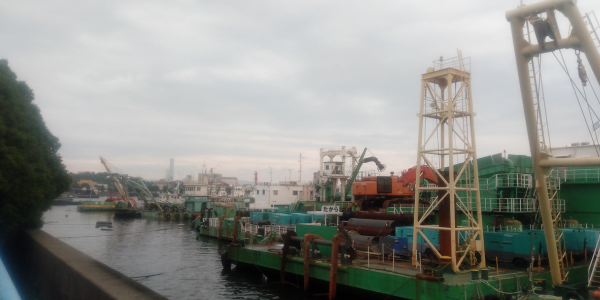

You will arrive at a place overlooking the harbor.
Watching the sunset from here is fantastic.

Now, let’s go back.
Continue down the street under the bridge to the end of the street.

A sign indicating the Chitose ferry terminal is now in sight.
It may be hard to tell, but it says 200 meters to go.

I arrived at the Chitose ferry terminal.
I took the photos from the beginning of this section to this point three days before the ferry excursion to save time.
I took all photos from this point forward on July 19, the day of the ferry cruise.

Now, let’s get on the ferry.

I took the 14:00 boat.
There were eight passengers, including myself.

You can also see the boarding area on the other side of the river.

Now let’s set sail.


Two large bridges can be seen in the back.
The blue arrow points to the Namhaya Bridge, which I introduced earlier.
For more information, please see this article.
The red arrow points to the Port Bridge.
Please refer to the previous post on this topic on as well.

Taisho Harbor can be seen in the back.
Many small and medium-sized vessels are anchored.

Directly above is the Chitose Bridge.
As you can see, it is a rather high and large bridge.
Actually, around 2003 (Heisei 15), when the Chitose Bridge was completed,
tt was rumored that the Chishima ferry boat would be discontinued.
However, in reality, this did not happen and it is still in operation today.
Crossing this bridge was quite a hassle,
The ascent and descent alone is quite demanding.
Instead, the views from the bridge are spectacular.
During the daytime, the ferry boat runs every 20 minutes,
Those who miss the boat and cannot wait or want to exercise use the bridge.
Chitose Bridge is still better.
Ahead, you will see bridges much larger than the Chitose Bridge.
By looking at these bridges,
you will understand even more why the ferry is necessary.

Abeno Harukas can be seen even from here.
You can see it from anywhere you are in Osaka.

The two-minute boat ride was over in a flash.
With passengers aboard, the boat returned.
Now let’s come to the next ferry stop.
Funamachi Ferry Port

The next stop is the Funamachi ferry Port.
First, leave the Chitose Ferry Terminal (Tsurumachi side).
Go straight to the end of the street.
Then turn left and go straight.


Go straight for a while and you will come to a large street.
There is a 7-Eleven on the left.

If you continue to the right, you will reach the Namihaya Bridge.

To get to the Funamachi ferry, turn left.

A little further on, you will see a sign indicating the destination of the Funamachi Ferry Port.

Go straight for a while and…

Arrived.

Unlike the Chitose ferry, it is very short.
When I arrived, the boat was already on the other side of the river.
Like the Chitose ferry, it runs every 20 minutes during the day.
So I had to wait 20 minutes for the next sailing.

There is a waiting room near the boarding area.
I was a little tired from walking, so it was a good break.




There is no air conditioning, though.
The breeze from the window was pleasant.

The ship will depart at 15:00.
There are only two passengers, including myself.


It took about 30 seconds to reach the other side of the river.
Some of you may be thinking, “Do we really need a ferry in a place like this?”,
despite the short distance.

Yes, we need it!
The reason is simple: there are no bridges in the vicinity.
The only bridge that people and cars can pass through
is located approximately 800 meters east of here.
You don’t have to go out of your way to use that bridge,
By using this ferry, you can avoide a detour.

After a 30-second boat ride, let’s go to the next destination.
Kizugawa Ferry Port

The next stop is the Kizugawa ferry port.
There are eight ferry ports currently in Osaka City,
I have never used the Kizugawa ferry before.
This is my first time using this ferry service and I am very much looking forward to it.
Exit the Funamachi ferry port and go straight to the end of the street.

At the end of the street, turn left and continue straight.
There are many steel mills, shipyards, and other factories in this area.
There are no so many people even during the day.
By the way, this area is still in Taisho Ward.

After a short distance, a large bridge came into view.
This bridge is the Shin-Kizugawa Ohashi.
The bridge has a total length of 2.4 km, connecting Taisho Ward and Suminoe Ward on the other side of the river.
It is up to 50 meters above the river surface.
It opened in 1994 (Heisei 6).
The Taisho Ward side has a triple spiral.
I have crossed this bridge several times and remember being very tired.
Just climbing the triple spiral is a big challenge.
Even during the daytime, there are some people crossing the Chitose Bridge.
However, few people are seen crossing the Shin-Kizugawa Bridge.
Crossing this bridge is a big hassle.
So you can see how important the Kizugawa ferry is to us.

A little further along the Shin-Kizugawa Bridge,
you will arrive at the Kizugawa ferry terminal.


During the daytime, the ferry runs every 45 minutes.
Of all the eight ferry locations in Osaka, it has the fewest number of services during the day.

The next sailing is at 15:45.
I arrived 30 minutes before that.

Without fiddling with my smart phone,
Without thinking,
I just spent some time looking at the scenery in front of me.

Half an hour passed, and the ferry was ready to sail.
There are three passengers including myself.



I saw the New Kizugawa Bridge from a boat.
The sheer size is overwhelming.
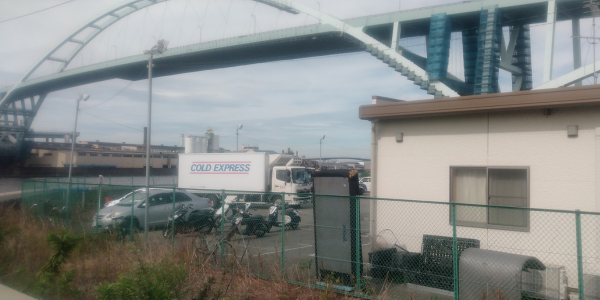
It took about 2 minutes to reach the other side of the river.
If you use the New Kizugawa Bridge, it will take at least 10 minutes to walk to the other side of the river.
Once again, I recognized the importance of the ferry.
Now let’s go further.
Senbonmatsu Ferry Port

After exiting the ferry port, proceed to the bridge you see ahead.


You will see a pedestrian bridge on your left.
Cross over here and continue on.

The Shin-Kizugawa Bridge can be viewed from here as well.
In this way, you can see how large and long this bridge is.

Get off the pedestrian bridge and go straight for a while.
The sign pointed by the yellow arrow indicates the entrance and exit of the Shin-Kizugawa Ohashi Bridge (Suminoe Ward side).
While the Taisho Ward side is a triple spiral,
the Suminoe Ward side is a slope shaped like the letter “し” in Japanese hiragana character.

After a short distance, you will see a “SUBARU” sign ahead.
Turn left at this intersection.

Go straight to the end of the street.
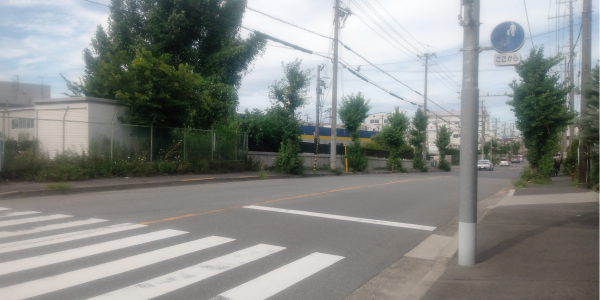
At the end of the street, turn right and go straight.
After walking for a while…
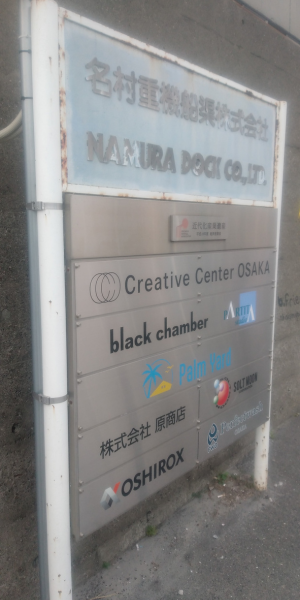
Some kind of old signboard is standing.
Namura Heavy Machinery Dock Co.
The names of several other companies and organizations are also listed.

Banner-flags stand near the entrance.
What is this place?

This is the site of the former Osaka factory of Namura Shipbuilding Co.
The shipyard was founded by Mr. Gennosuke Namura in 1911 (Meiji 44).
The head office is still located in Nishi Ward, Osaka City.
However, the shipyard was relocated to Imari City, Saga Prefecture, in the 1970s.
As a result, the Osaka factory was closed.
Even though it has been closed for quite a few years,
some of the buildings of the shipyard and the dockyard still remain as they were in those days.
By making effective use of this place,
they hold various events related to art, music, etc.
Please refer to this page for details.
There was some kind of event going on that day, though,
I gave up due to time constraints.
So, I would love to visit this place if I have the chance.
By the way,
the nearest station to this place is Kitakagaya Station on the Osaka Metro Yotsubashi Line.

Thus, the wall covering the former site of the Namura Shipbuilding Osaka factory
has cute illustrations.
Continue straight down this street.

A green building can be seen ahead.
Turn left at this intersection.

Going straight ahead, you will see some kind of spiral bridge.

This is Senbonmatsu Bridge.
Both entrances and exits are double spirals.
From its resemblance to eyeglasses when viewed from above,
it is called “Megane*1 Bashi*2 ” by the locals. *1 Megane means eye glasses. *2 Hashi means bridges. It can be pronounced “Bashi” when it is connected with othre words.
Surprisingly old, it was completed in 1973 (Showa 48).
Like the Shin-Kizugawa Bridge, it is quite tough to cross.


The time was already around 16:30.
The sun was still shining and it was very hot and humid.
I don’t feel like crossing this bridge.
Therefore, I will use a ferry here as well.
The boat just went at 16:30.
I wait for the next boat at 16:45.

You can see the Shin-Kizugawa Bridge over there.
It took me about 40 minutes to walk from there.
Let’s take a break until the boat arrives.


The Senbonmatsu Bridge is approximately 1.2 km long and 33 m high.
Besides walking and biking,
you can also cross the bridge by bus.
Osaka City Bus No. 76, Dome-mae Chiyozaki to Subway Suminoe Koen,
crosses this bridge.
To check the timetable for the bus from Taishobashi (in front of Taisho Station) to Suminoe Koen,
please refer to this page.


The wind is pleasant.
The skyscrapers of Umeda can be seen from here as well.
Of the many people in the Umeda area,
how many people know about this ferry?

While I was thinking about this, the boat arrived at the other side of the river.
I am back in Taisho Ward.
I forgot to mention that the other side of the river is Nishinari Ward.

You will see a large plaza on your left.

Local elementary school students were practicing baseball.
The open space is well utilized.

I have now completed half of the ride.
Let’s move on.
Ochiaishimo Ferry Port

The next stop is the Ochiaishimo ferry port.
Located approximately 15 minutes from here.

This neighborhood is called Hirao.
I, hiikun, was born and raised in this area.
A little further down the street is Hirao Elementary School, my alma mater.
I used to play with my friends at Hirao Park located in front of it.
Every time I pass by this neighborhood,
it brings back memories of my childhood.

I kept walking, feeling nostalgic…
The sign for the Ochiaishimo ferry terminal was in sight.


Then let’s ride.

I apologize for the inconvenience.
I suddenly had to post a photo of the other side of the river.
I had given up hope of getting on the 17:00 boat.
However, I were able to board the ferry just as it was about to depart.
Because the ferry was very crowded and I boarded just before departure,
I could not take my time to photograph it.

The Senbonmatsu Bridge can be seen in the back.
In fact, from Ochiaishimo ferry, you can see the Senbonmatsu ferry and
the Ochiai Kamigami ferry boat running, which you will board later.
*Depends on the timetable.

It is a pity that I could not photograph too many of them.
I can’t stay depressed, so let’s just move on.
Ochiaikami Ferry Port

Exit the ferry terminal and turn left.
*By the way, this is Nishinari Ward.

Continue further north.


It takes about 10 minutes to walk.
The sign that reads “Kizugawa BASE” is a landmark.

You will see a sign that reads “Ochiai Kaminowatari.”
As I continue down this narrow alley…


I arrive at the Ochiai Kamigami ferry port.
The huge arched structure in the back is the Kizu River sluice gate.
Actually, about Ochiai Kamigami Ferry Port and Kizugawa Sluice Gate,
you can read about it in my previous post.
If you like, please refer to this page.

Ochiai Kamitatami ferry terminal is located in a residential area, not in a factory zone.
The atmosphere is quiet and relaxed.

Now, the 5:30 p.m. boat arrives.

Now, let’s set sail.


The view of the Kizugawa Sluice Gate from the boat is superb.
As I mentioned in my previous post,
the Kizugawa sluice gate will disappear in a few years.
More than 50 years have already passed since its completion.
It has protected us from various floods.
However, it has been aging in recent years,
It is questionable whether it can withstand possible disasters that may occur in the future.
To protect against typhoons, floods, and tsunamis, and to reinforce earthquake resistance,
a new sluice gate will be constructed a little upstream from where the Kizu River sluice gate is currently located.
Crane trucks can be seen behind the sluice gate.
It appears that construction of the new sluice gate has already begun.
Since it will not be seen in a few years,
please come and see it while you can.



I have now visited 6 of the 8 locations.
Have you noticed anything so far?
Yes, four of the eight ferry crossings are on the same river.
There are few bridges downstream of this Kizu River that we can crossed on foot or bicycle.
And even if there is a bridge, it is too high and takes time to cross.
I proceeded with our steps, reaffirming the importance of the ferry.
There are two places left to go.
Let’s go.
Jinbei Ferry Port


Let’s head to the Jimpei ferry terminal, where there are only two places left to go.
After exiting the Ochiai Kamigami ferry terminal, turn left and you will see a traffic light.
Turn right there.

Continue straight down this street for a while.
Then, to the right…

You can see a shopping mall called Chishima Garden Mall.
And this is the ” Nouka No Minori (Farmer’s Fruit) “.
Sweets and beverages made from domestic fruits are available.
And across the way…

There is a bakery, Rompal, famous for its honey doughnuts.
I thought about buying something at either store
and taking a break.
However, due to time constraints, I had to abandon the plan.
For more information on these two stores, please refer to this page.

A little further on…


you can see the road leading to the estate grounds.
Please proceed here.
At the top of the hill, turn right.

Go straight for a while.

You will come to a large plaza.
The brown building in the back in the center is the Taisho Ward Office.
Walk towards there.

Behind this is the symbol of Taisho Ward, Mt Showa.
I did not stop by because it was not included in this project.
For more information, please refer to this article.

Down this hill…
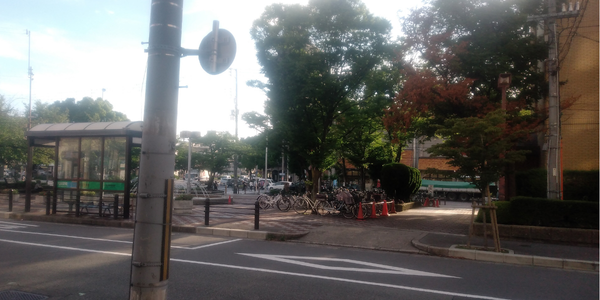
you will reach another square.

Taisho-dori, the main street of Taisho Ward.

Proceeding in this direction, you will reach Taisho Station.

Cross the traffic light and go straight.
The moment I decided to take further steps,
I faced a problem.
My cell phone battery almost ran out of battery.
I had no choice but to return home to recharge the battery.
However, I was rather glad that my cell phone battery was about to run out.
I were able to take a break while recharging.

After a 50-minute break, the ferry cruise resumes.
Go straight down this street.


Hmm?
I arrived at a place that looked familiar.
Yes, it is an intersection near the Sin Chitose bus stop.
The Chitose Bridge can be seen in the back.

However, I proceed in the opposite direction.

After a short distance, you will see the supermarket “Sandy” .
Turn left at that corner.


Continue to the end of the street and turn right.

After about 50 meters…

I arrived at the Jinbei ferry terminal.
It is the busiest and most frequently operated of Osaka’s eight ferry crossings.



When I arrived, the ferry boat had already departed.
Wait for the next boat at 19:15.


Departure.
There are about 10 passengers including myself.

This river is called the Shirinashi River.
As in the Kizu River, an arched sluice gate can be seen.
This one will also disappear in a few years due to reconstruction,
Now is the time to see it.


Escape Taisho Ward again.
I entered the Minato Ward.
There is one ferry port remaining.
Tempozan Ferry Port
The last stop is the Tenpozan ferry terminal.
If you have read the previously posted article,
【I’ll tell you how to get from USJ to Tempozan for free! 】,
you may know it.
It is the only one of the eight ferry sites located outside of Taisho Ward.
It connects Chikko, Minato Ward with Sakurajima, Konohana Konohana Ward.
Because this ferry connects two major tourist attractions, Tempozan and USJ,
it is probably the most well-known ferry service among tourists.
So let’s go.

As you exit the Jimpei ferry terminal, you will see a straight road in front of you.
Anyway, go straight down that road.

Straight ahead…

You will reach a large street.
It is called Minato Dori.
Going west on Minato Dori, you can reach Tempozan.
However, I, hiikun, had no strength left to walk.
So…

A little further east on Minato Dori,
Osaka City Bus Yunagi stop is located.
From there I took a bus to Tempozan.

A significant number of them are secured.
I was lucky enough to get on without waiting.

Approximately 15 minutes from the Yunagi stop,
I arrived at the Tempozan Harbor Village stop.
As you get off the bus, you see just in front of you…

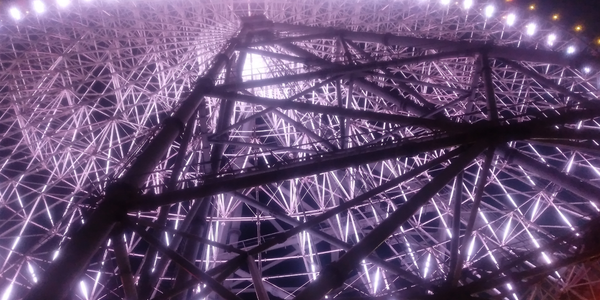

The Giant Ferris Wheel, which is one of the famous landmarks in Tempozan.
The moment I saw this, my exhaustion was gone.
Even though it was before 8pm,
there were a surprisingly large number of people in the vicinity.
There was a long line for the Ferris wheel.



This is the renovated Tempozan Passenger Ferry Terminal.
It is used as a landing place for large passenger ships.
Incidentally, if large passenger ships do not use the terminal,
they will be rented out as an event venue.
Quoted from this article.
Let’s go further.
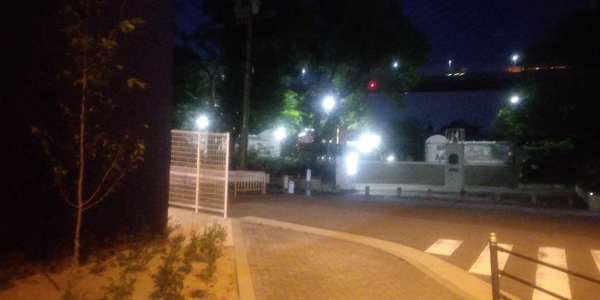
I looked behind me…
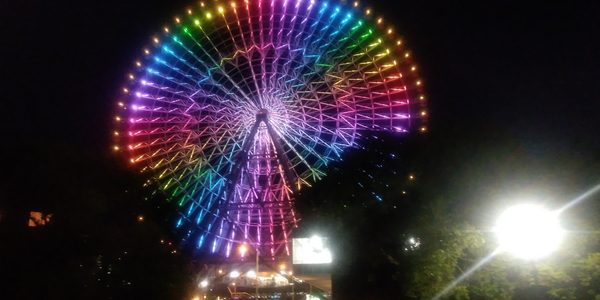
The Ferris wheel was glowing in rainbow colors.
Lovely~!
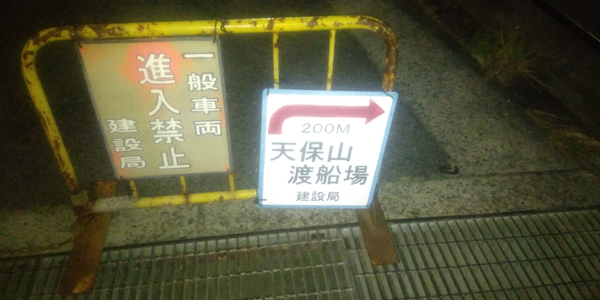
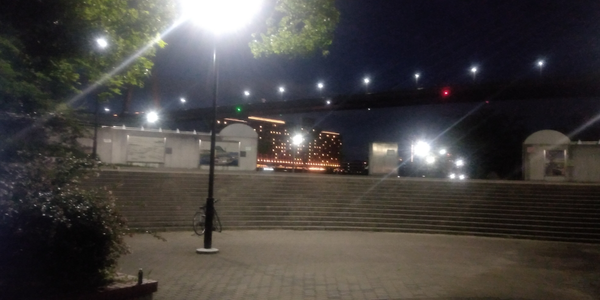
Passing through Tempozan Park…

The Aji River is visible.
As you continue along the boardwalk…

you can see it.
The eighth and final location, the Tenpozan ferry port.
The 20:00 boat was about to depart.
I didn’t get on this.



I, hiikun, got on the last flight of the day, departing at 20:30.
The passengers of the Tenpozan ferry are very different from the other seven locations.
The other seven locations are used almost exclusively by locals.
On the other hand, the Tempozan ferry is used not only by locals but also by many tourists.
The use of the hotel by foreign tourists is particularly noticeable.
Furthermore, many foreign employees of USJ also use this service.
This makes it very interesting to hear the various languages spoken on board from time to time.
As I said at the beginning of this item,
this ferry port is located near the major tourist attractions of Tempozan and USJ.
Therefore, If I were to recommend one place out of a total of eight ferry crossings,
for those who come here for sightseeing,
I, hiikun, would highly recommend the Tenpozan Watership.

The ferry will be leaving soon.


I apologize for the unclear image.
A small camera malfunction led to this result.
Of course, the naked eye could clearly see the night view of the Umeda skyscrapers.

By the way, this is what it looks like during the day.
This is a photo I took on a previous ride on the Captain’s Line.
You can also see this view from the Tempozan ferry during the daytime.
*Please refer to this article for more information on the Captain Line.

I am nearing the end of our long trip to eight different ferry crossings.

The boat picked up passengers waiting on the other side of the river,
and returned promptly.
This concludes today’s operation of the Tenpozan ferry.

Unlike the Tempozan side,
the Sakurajima side is very quiet.

The JR Yumesaki Line Sakurajima Station, the last stop of the line, is just around the corner.

Go straight to the first traffic light.
Turn right at that corner.

Straight ahead…

You will be on a large street.
Anyway, straight ahead here…

Arrived at Sakurajima Station on the JR Yumesaki Line.
This completes the entire process.
I left home after 1:30 pm.
I arrived at Sakurajima Station at around 20:50.
The seven-hour ferry cruise was
physically demanding.
However, I reaffirmed the attractiveness and importance of the ferry boats,
I was able to discover something new and interesting.
It has been a long time since I have walked so much.
Thanks to that, I was able to have a good night’s sleep.
(Fin)
What to prepare for a walking tour of the ferry
Here is what you need to do to prepare for a ferry tour on foot.
Get a good night’s sleep the night before.
And make sure you have a good breakfast.
You will be walking a considerable distance.
Therefore, wear clothes that are easy to move around in.
Shoes are especially important.

No sandals or high heels.

Shoes that can withstand prolonged walking are desirable.
Moreover, it is even better if they are comfortable for you.
By the way, I, hiikun, am a fan of ASICS WALKING.
Since I came across this brand,
I was able to find the perfect shoes for my feet.
It has made walking feel more enjoyable.
The shoes in the photo are more than six years old since I made a purchase.
However, there was no noticeable damage, and I am still using them.

Hats, sunglasses, parasols, sunscreen, etc.
Don’t forget to take precautions against ultraviolet rays and heat stroke.
Hydrate frequently.
It is also important to take breaks in moderation.
If you think it’s impossible,
please stop promptly.
There is no need to force yourself to visit everything in one day.
Above all, it is important to have fun.
Make plans within a reasonable range.
≪Advertisement≫.
Summary
This time, though, I went on a walking tour of all eight of Osaka’s ferry crossings.
How was it?
Here is a recap of the itinerary.
14:00, Chitose Ferry
↓
15:00, Funamachi Ferry
↓
15:00, Kizugawa Ferry
↓
16:45, Senbonmatsu Ferry
↓
17:00, Ochiaishimo Ferry
↓
17:30, Ochiaikami Ferry
↓
19:15, Jinbei Ferry
↓
20:30, Tempozan Ferry
It took about 7 hours to arrive at Sakurajima Station on the JR Yumesaki Line.
I took frequent breaks along the way,
I think it was a very tough journey.
However, I have rediscovered the charm and importance of ferry boats and made new discoveries,
I had a great day.
The process introduced here is just one example.
It is not necessarily necessary to imitate this.
It is also good to visit on multiple days.
It is not necessary to visit all of them; it is OK to visit only the ones you are interested in.
If walking is not your thing, you can also tour the area by bicycle.
On YouTube, those who have visited all the ferry ports in Osaka by bicycle,
record thier tour and post it on video.
You may want to refer to those videos.
In other words, it is up to you, my readers, to decide how to enjoy it.
I hope you will enjoy your ferry cruise.
I hope that this article will help you in your ferry tours.
Do not forget to take precautions against ultraviolet rays and heat stroke, especially when doing so in mid-summer!
Enjoy your trip as much as you can.
Well, I look forward to seeing you again in the next article.
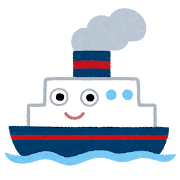
Last notice ≪Advertisement≫.
If you visit Taisho to enjoy a ferry tour, this hotel is a must!
Please read my previous posts for more information.
「【Convenient and affordable】Hotel Sobial Osaka Dome-mae for a comfortable stay! 」
「【Recommended by locals】Two recommended gourmet restaurants around Taisho Station|If you have no idea where to go, please visit these restaurants first! 」



